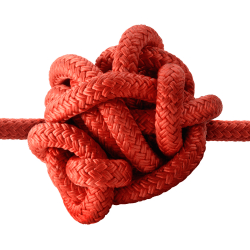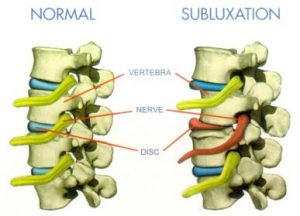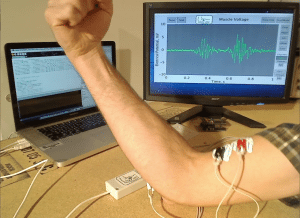Most of us know that chiropractic care is an excellent approach for addressing all sorts of spinal issues associated with everything from back pain to neck pain or shoulder pain. However, what less people know is that chiropractic care is also a highly effective treatment methodology for dealing with achy muscles. If you suffer with muscular “knots” keep reading!
Why do my muscles ache? 
Muscular aches, tension or “knots” occur when muscles contract involuntarily for a sustained period of time – Normally, your muscles contract and relax as required throughout the day to move your body or simply to support you in position. Technically, localised areas of muscle tension are known as myofascial pain syndrome, which is also sometimes referred to as ”trigger points”.
Bundles of muscular tension have altered circulation and nervous system activity. In the past, scientists thought that the irritated areas of muscle were caused and exacerbated by excessive nerve impulses, causing the stimulated muscle to remain contractacted. However, newer research suggests that the opposite may in fact be the case – Muscular knots may actually suffer from impaired nerve flow or under stimulation.
What causes the problem?
Tight, sore or achey muscles can be the result of a huge variety of situations – some common ones include recent injury, inadequate healing of a past injury, repetitive strain injuries , desk or computer work, sports (injury or overwork), emotional stress, lack of sleep and even dehydration.
Muscle tension is also very commonly associated with poor posture and a misaligned spine. While poor posture or the condition known as vertebral subluxation might not be the sole cause of your muscle pain, it very often serves to make it worse then it otherwise would be!
How does chiropractic help?

With a subluxated spine, the nerve can easily be irritated, trapped or “pinched”
Chiropractic treatment has two main benefits in the reduction of muscle pain. Firstly, by restoring the spine to proper alignment one of the major contributing factors can be reduced. Secondly, chiropractic adjustments can serve to stimulate nerve impulses that prompt muscles to relax.
Muscles fasten to bones via tendons. When spinal bones are out of alignment, they pull connecting muscles out of their proper position, causing imbalance and muscle tension. In addition, spinal bones (vertebrae) stack one on top of another to form the spinal column. Inside this column is a hollow canal through which the spinal cord flows. The spinal cord – along with the brain to which it attaches – makes up the central nervous system. Nerves enter and exit the spinal column through openings between vertebrae and travel to structures throughout the body.
Wit this in mind, its easy to see how misalignment of the spine may therefore interfere with impulses transmitted by these nerves, and how putting the spine back into the correct alignment can fix the problem.
What’s the evidence?
Since there are so many “cures” out there for muscle pain, its totally understandable that many people question whether chiropractic really can offer a benefit – at least until they try it! But going beyond our own experience, there is now a considerable body of evidence which shows the chiropractic approach yields reliable and consistent results.
In one experiment involving 16 muscle pain suffers, researchers placed electrodes over knots in muscles on the sides of the spine . The participants then received chiropractic adjustments[1] The electrodes measured muscular tension before and after the adjustments using technology called electromyography (EMG). The results shows that the “electromyographic activity decreased by at least 25 percent after treatment in 24 of the 31 sites which were measured.”
Perhaps more interesting, the study’s authors conduced that as well as being highly effective, the results were almost immediate with the chiropractic treatment[2]
A similar EMG study of 20 people concluded “that altered muscle function may be a potential short-term therapeutic effect of chiropractic adjustments[3]”
Research also shows that similar benefits can be obtained across the body. Although most studies in relation to muscle pain and chiropractic treatment do focus on various types of back pain, a recent study of 28 chronic knee pain sufferers suggests the applications may be very broad indeed.
In the study, the participants suffered from a type of knee pain that is caused by inhibited thigh muscles. Researchers randomly assigned the patients to either a chiropractic care protocol or control group. The chiropractic group received adjustments to the sacral bone at the base of the spine, as well as to the hip bones on either side of the sacrum. The researchers noted a 7.5 percent drop in knee muscular inhibition in the chiropractic cohort, but not in the control group.[4]
A similar approach was taken by a Canadian study, which looked at 18 patients with knee pain associated with similar issues, this time cased by the quadriceps in the front of the thigh . After receiving chiropractic adjustments to the hip area, the patients underwent a variety of tests that indicated a significant drop in muscular inhibition and pain in the problem leg. [5]
Multi-facated approaches are best
At Complete Chiropractic, our focus is on complete solutions which help our patients get better and stay better. Since muscle pain is a multi-factoral issue, its common to use more than one approach to achieve a complete resolution.
Chiropractic adjustments will go a long way to addressing the underlying issue, but sometimes additional treatments might be more effective in relieving the worst of the pain. One technique we recommend and provide is massage. While many do, people shouldn’t just view massage as a luxury saved for spa days or vacations – rather, massage is and important and well researched therapeutic technique recommended by many chiropractors and it happens to be a great technique in the treatment of muscle knots, too. A great massage therapist will know how to treat areas of the body that hold tension and muscle knots, and work to break the knot down. A combination approach like this allows is to correct the underlying problem whilst also addressing the immediate symptom.
Struggling? Give us a call!
If you’re struggling with muscle pain or knots and nothing else seems to be working, its highly likely that an underlying spinal or postural issue might be to blame. At Complete Chiropractic were experts in diagnosing and treating these incredibly common conditions. With the right treatment most patients are astonished at just how quickly they can experience a real improvement in their quality of life. It all starts with your initial consultation – and if you get in touch today you can even take advantage of our new patient special offer!
[1] J Manipulative Physiol Ther 2005;28:465- 71
[2] J Manipulative Physiol Ther 2005;28:465-71
[3] J Manipulative Physiol Ther 2000;23:585-95
[4] J Manipulative Physiol Ther 2000;23:76-80
[5] J Manipulative Physiol Ther 1999;22: 1 49-53

